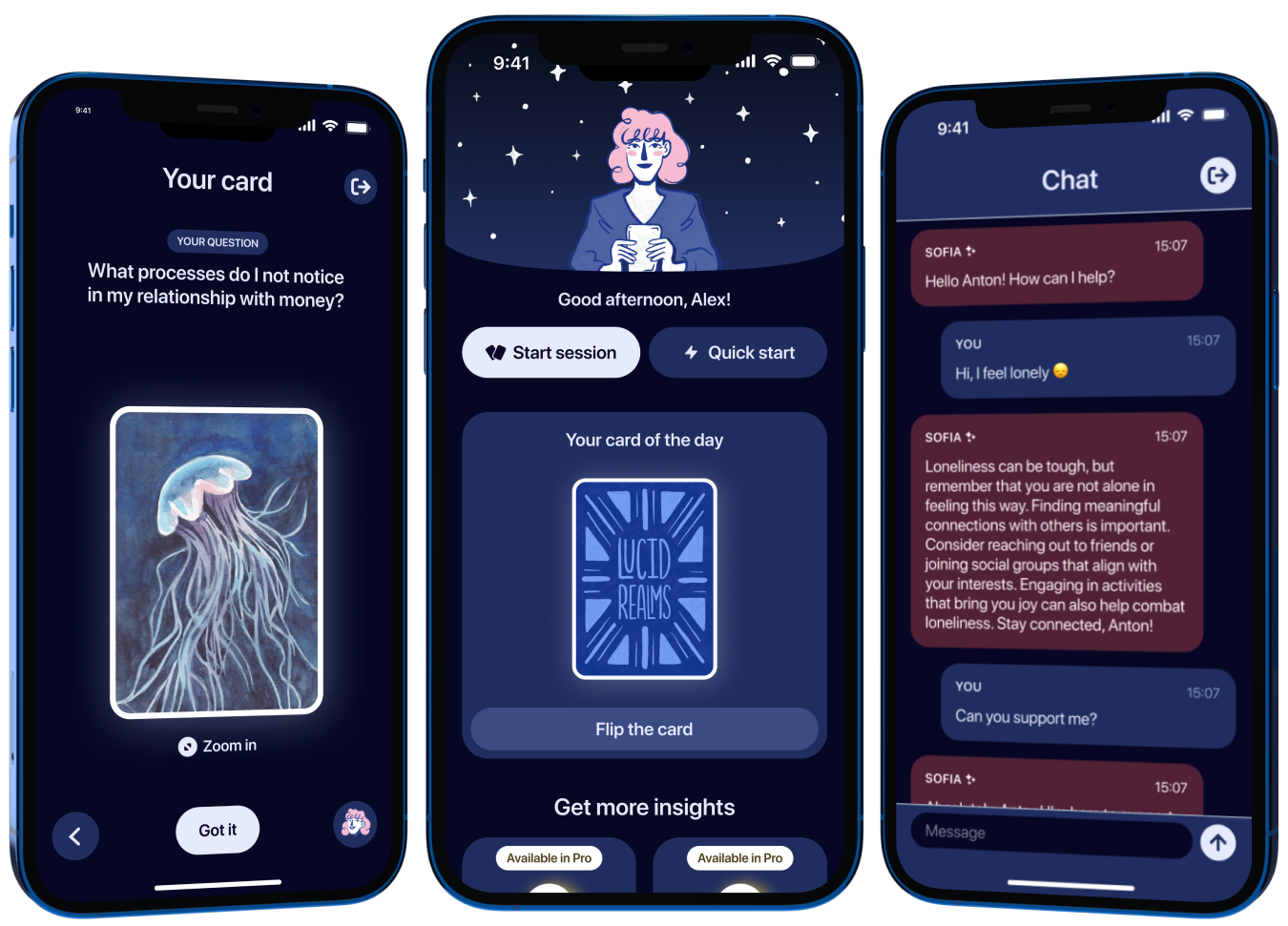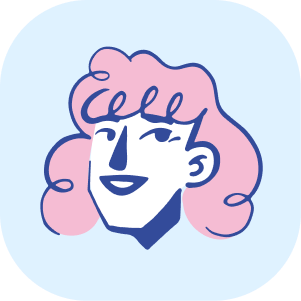We use cookies to give you a tasty experience!
Cookie Settings
We use cookies and data to:
Deliver an excellent service
Track outages and issues
Protect against spam, fraud and abuse
Measure site statistics to enhance the quality of our services
By continuing to browse our site, you’re agreeing to our use of cookies.
Deliver an excellent service
Track outages and issues
Protect against spam, fraud and abuse
Measure site statistics to enhance the quality of our services
By continuing to browse our site, you’re agreeing to our use of cookies.
Cognitive-Behavioral Therapy Tools: A Practical Guide
Cognitive-Behavioral Therapy (CBT) is a form of psychotherapy that combines techniques from cognitive and behavioral therapy. It focuses on specific problems and aims for tangible results.
During CBT sessions, a cognitive therapist helps the patient change their attitudes and beliefs that have developed as a result of incorrect learning, development, and self-awareness concerning events. CBT has particularly shown excellent results in treating panic attacks, phobias, and anxiety disorders.
Cognitive-Behavioral Therapy (CBT) is a form of psychotherapy that combines cognitive and behavioral techniques. Its main goal is to identify the patient's automatic thoughts or "cognitions" (which traumatize their psyche and lead to a decrease in the quality of life) and redirect efforts towards replacing them with more positive, life-affirming, and constructive thoughts. The therapist's task is to identify these negative cognitions since the person may perceive them as "normal" and "self-evident" thoughts, assuming them to be "valid" and "true."
Initially, CBT was used exclusively as an individual form of consultation, but now it is also utilized in family therapy and group therapy settings (dealing with issues of fathers and children, married couples, etc.).
A consultation with a cognitive-behavioral psychologist involves a mutually interested and interactive dialogue between the psychologist and the patient, with both actively participating. The therapist asks questions that allow the patient to understand the significance of their negative beliefs and become aware of their emotional and behavioral consequences. Afterward, the patient can independently decide whether to maintain these beliefs or modify them.
The main distinction of CBT lies in the cognitive therapist's ability to bring to light deeply ingrained beliefs of the individual, experimentally identify distorted beliefs or phobias, and assess them for rationality and adequacy. The psychologist does not impose a "correct" point of view, nor does he provide "wise" advice or a singularly "correct" solution to the problem. Instead, by asking the right questions step by step, the therapist extracts valuable information about the nature of these destructive cognitions, enabling the patient to draw their own conclusions.
The core concept of CBT is to teach the person to independently correct their erroneous information processing and find the right path to resolving their psychological problems.
During CBT sessions, a cognitive therapist helps the patient change their attitudes and beliefs that have developed as a result of incorrect learning, development, and self-awareness concerning events. CBT has particularly shown excellent results in treating panic attacks, phobias, and anxiety disorders.
Cognitive-Behavioral Therapy (CBT) is a form of psychotherapy that combines cognitive and behavioral techniques. Its main goal is to identify the patient's automatic thoughts or "cognitions" (which traumatize their psyche and lead to a decrease in the quality of life) and redirect efforts towards replacing them with more positive, life-affirming, and constructive thoughts. The therapist's task is to identify these negative cognitions since the person may perceive them as "normal" and "self-evident" thoughts, assuming them to be "valid" and "true."
Initially, CBT was used exclusively as an individual form of consultation, but now it is also utilized in family therapy and group therapy settings (dealing with issues of fathers and children, married couples, etc.).
A consultation with a cognitive-behavioral psychologist involves a mutually interested and interactive dialogue between the psychologist and the patient, with both actively participating. The therapist asks questions that allow the patient to understand the significance of their negative beliefs and become aware of their emotional and behavioral consequences. Afterward, the patient can independently decide whether to maintain these beliefs or modify them.
The main distinction of CBT lies in the cognitive therapist's ability to bring to light deeply ingrained beliefs of the individual, experimentally identify distorted beliefs or phobias, and assess them for rationality and adequacy. The psychologist does not impose a "correct" point of view, nor does he provide "wise" advice or a singularly "correct" solution to the problem. Instead, by asking the right questions step by step, the therapist extracts valuable information about the nature of these destructive cognitions, enabling the patient to draw their own conclusions.
The core concept of CBT is to teach the person to independently correct their erroneous information processing and find the right path to resolving their psychological problems.
Goals of Cognitive-Behavioral Therapy:
Goal 1: Help the patient change their self-perception, from feeling "worthless" and "helpless" to viewing themselves as individuals prone to making mistakes (like everyone else) and capable of correcting them.
Goal 2: Teach the patient to control their negative automatic thoughts.
Goal 3: Enable the patient to independently identify the link between cognitions and their subsequent behavior.
Goal 4: Help the patient analyze and correctly process new information on their own.
Goal 5: Empower the patient to independently replace dysfunctional, destructive automatic thoughts with realistic and life-affirming ones.
CBT is not the only method used to address psychological disorders, but it is one of the most effective and results-oriented approaches.
Goal 2: Teach the patient to control their negative automatic thoughts.
Goal 3: Enable the patient to independently identify the link between cognitions and their subsequent behavior.
Goal 4: Help the patient analyze and correctly process new information on their own.
Goal 5: Empower the patient to independently replace dysfunctional, destructive automatic thoughts with realistic and life-affirming ones.
CBT is not the only method used to address psychological disorders, but it is one of the most effective and results-oriented approaches.
Strategies for Conducting CBT Sessions:
There are three main strategies in cognitive therapy: collaborative empiricism, Socratic dialogue, and guided discovery. Thanks to these strategies, CBT demonstrates significant effectiveness and yields excellent results in resolving psychological problems. Furthermore, the knowledge gained is retained by the individual, allowing them to cope with their issues in the future without the aid of a specialist.
Strategy 1: Collaborative Empiricism
Collaborative empiricism involves a collaborative process between the patient and the psychologist to identify the patient's automatic thoughts. These thoughts are either reinforced or refuted through various hypotheses. The essence of collaborative empiricism is as follows: hypotheses are proposed, different evidence supporting the usefulness and adequacy of cognitions is considered, logical analysis is conducted, and conclusions are drawn. This process helps to discover alternative thoughts.
Strategy 2. Socratic dialogue
Socratic dialogue involves a conversation in the form of questions and answers, allowing the following:
The patient must make all these conclusions by answering the psychologist's questions. The questions should not be directed towards a specific answer, and they should not push or lead the patient to a particular decision. The questions should be posed in a way that allows the person to open up and objectively see everything without resorting to defense mechanisms.
- Identifying the problem.
- Finding logical explanations for thoughts and images.
- Understanding the significance of events and how the patient perceives them.
- Evaluating events that support the cognitions.
- Assessing the patient's behavior.
The patient must make all these conclusions by answering the psychologist's questions. The questions should not be directed towards a specific answer, and they should not push or lead the patient to a particular decision. The questions should be posed in a way that allows the person to open up and objectively see everything without resorting to defense mechanisms.
Strategy 3. Guided Discovery
The essence of guided discovery is as follows: using cognitive techniques and behavioral experiments, the psychologist helps the patient clarify problematic behavior, identify logical errors, and develop new experiences. The patient develops the ability to process information correctly, think adaptively, and respond appropriately to events. As a result, after the consultation, the patient can handle problems independently.
Techniques of cognitive therapy
The techniques of cognitive therapy have been specifically developed to identify negative automatic thoughts in the patient and detect behavioral errors (step 1) and then to correct the cognitions, replace them with rational ones, and fully reconstruct behavior (step 2).
Step 1: Identification of automatic thoughts Automatic thoughts (cognitions) are thoughts that are formed throughout a person's life based on their activities and life experiences. They arise spontaneously and lead the person to act in a certain way in a given situation. Automatic thoughts are perceived as plausible and the only truth.
Negative destructive cognitions are thoughts that constantly "run through the head," preventing adequate responses to events, causing emotional exhaustion, physical discomfort, disrupting a person's life, and isolating them from society.
The "Filling the Void" technique
The cognitive technique "Filling the Void" is widely used to identify cognitions. The psychologist breaks down the past event that caused negative emotions into the following points:
A - the event;
B - unconscious automatic thoughts "void";
C - inadequate reaction and subsequent behavior.
The essence of this method lies in having the patient, with the psychologist's help, fill in the "void" between the event and the inadequate reaction, which the patient cannot explain to themselves, and that becomes a "bridge" between points A and C.
Example from practice: A man experienced inexplicable anxiety and shame in large gatherings and always tried either to remain unnoticed in a corner or quietly leave. I divided this event into points: A - need to attend a social gathering; B - unexplained automatic thoughts; C - feeling of shame.
It was necessary to identify the cognitions and thus fill the void. After asking the relevant questions and receiving answers, it became clear that the man's cognitions were "doubts about his appearance, ability to maintain a conversation, and a lack of a sense of humor." He always feared being ridiculed and looking foolish, so after such social encounters, he felt humiliated.
Thus, after a constructive dialogue and questioning, the psychologist was able to identify the patient's negative cognitions, which revealed illogical sequences, contradictions, and other erroneous thoughts that were "poisoning" the patient's life.
Negative destructive cognitions are thoughts that constantly "run through the head," preventing adequate responses to events, causing emotional exhaustion, physical discomfort, disrupting a person's life, and isolating them from society.
The "Filling the Void" technique
The cognitive technique "Filling the Void" is widely used to identify cognitions. The psychologist breaks down the past event that caused negative emotions into the following points:
A - the event;
B - unconscious automatic thoughts "void";
C - inadequate reaction and subsequent behavior.
The essence of this method lies in having the patient, with the psychologist's help, fill in the "void" between the event and the inadequate reaction, which the patient cannot explain to themselves, and that becomes a "bridge" between points A and C.
Example from practice: A man experienced inexplicable anxiety and shame in large gatherings and always tried either to remain unnoticed in a corner or quietly leave. I divided this event into points: A - need to attend a social gathering; B - unexplained automatic thoughts; C - feeling of shame.
It was necessary to identify the cognitions and thus fill the void. After asking the relevant questions and receiving answers, it became clear that the man's cognitions were "doubts about his appearance, ability to maintain a conversation, and a lack of a sense of humor." He always feared being ridiculed and looking foolish, so after such social encounters, he felt humiliated.
Thus, after a constructive dialogue and questioning, the psychologist was able to identify the patient's negative cognitions, which revealed illogical sequences, contradictions, and other erroneous thoughts that were "poisoning" the patient's life.





